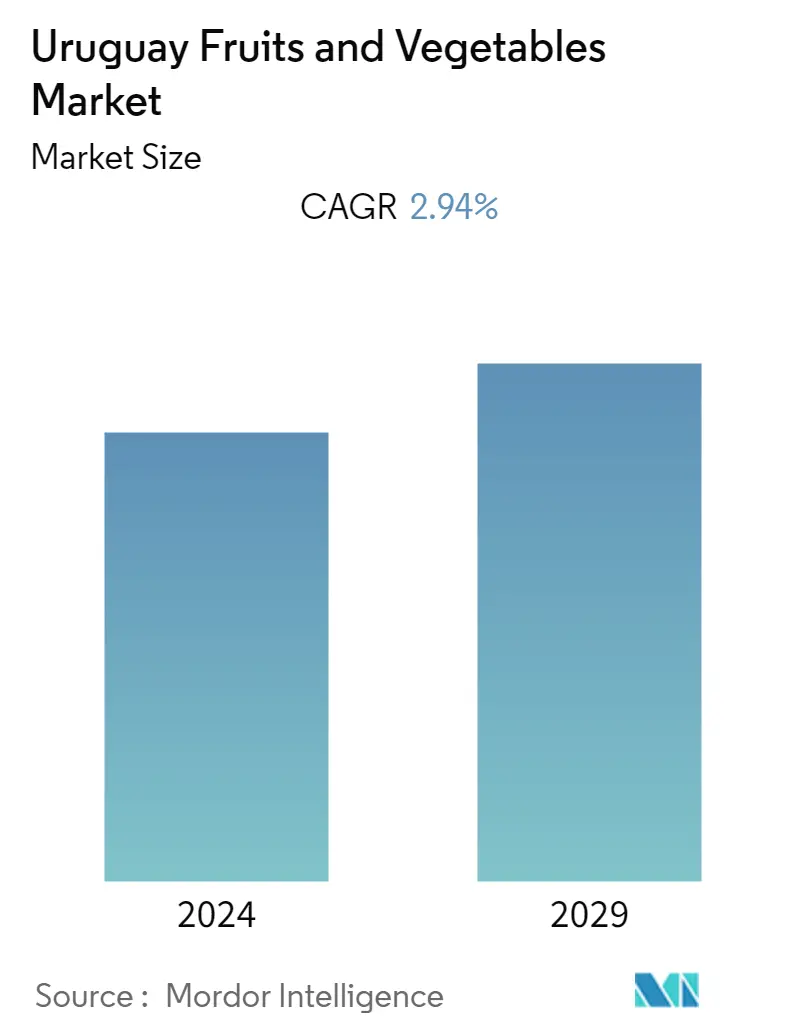Market Size of Uruguay Fruits and Vegetables Industry

| Study Period | 2019 - 2029 |
| Base Year For Estimation | 2023 |
| Forecast Data Period | 2024 - 2029 |
| Historical Data Period | 2019 - 2022 |
| CAGR | 2.94 % |
Need a report that reflects how COVID-19 has impacted this market and its growth?
Uruguay Fruits & Vegetables Market Analysis
The Uruguay Fruits and Vegetables Market size is estimated at USD 17.09 billion in 2023, and is expected to reach USD 19.75 billion by 2028, growing at a CAGR of 2.94% during the forecast period (2023-2028).
- Major fruits and vegetables grown in Uruguay are oranges, tangerines, apples, cranberries, blueberries, pears, melons, grapes, peaches, quinces, sweet potatoes, dry peas, onions, pumpkins, squash, potatoes, and broad beans. Uruguay has a long history of citrus fruit production, and a significant portion of it, about 85%, is exported to other countries. The advanced traceability system that Uruguay uses for its citrus fruits provides guarantees of their origin, which can help to ensure food safety and quality for consumers.
- In contrast, about 80% of fruit and vine production in Uruguay is focused on the domestic market, particularly in the southern part of the country. This means that most of the fruits and vegetables produced in this region are consumed within the country rather than being exported.
- Citrus fruits are the major fruit grown in Uruguay, with two main growing regions. The northern area covers about 84% of the overall citrus area and focuses on growing oranges and tangerines, while the southern area is known for growing lemons.
- Uruguay has also implemented agro-intelligent technology in producing citrus fruits, allowing consumers to access information on phytosanitary elements, nutrition, and risk, among other things. This can help to ensure that the citrus fruits produced in Uruguay meet high safety and quality standards.
- The Uruguayan climate, the fertile land, and the responsible production are favorable for the cultivation of blueberries. The major factors driving the market are favorable government policies such as zero restrictions on exports of agro-industrial products and insurance against extreme climate events, resulting in loss of fruit and vegetable production. The country exhibits great potential to showcase the quality of Uruguayan products and aims to strengthen the country's presence in various other countries.
